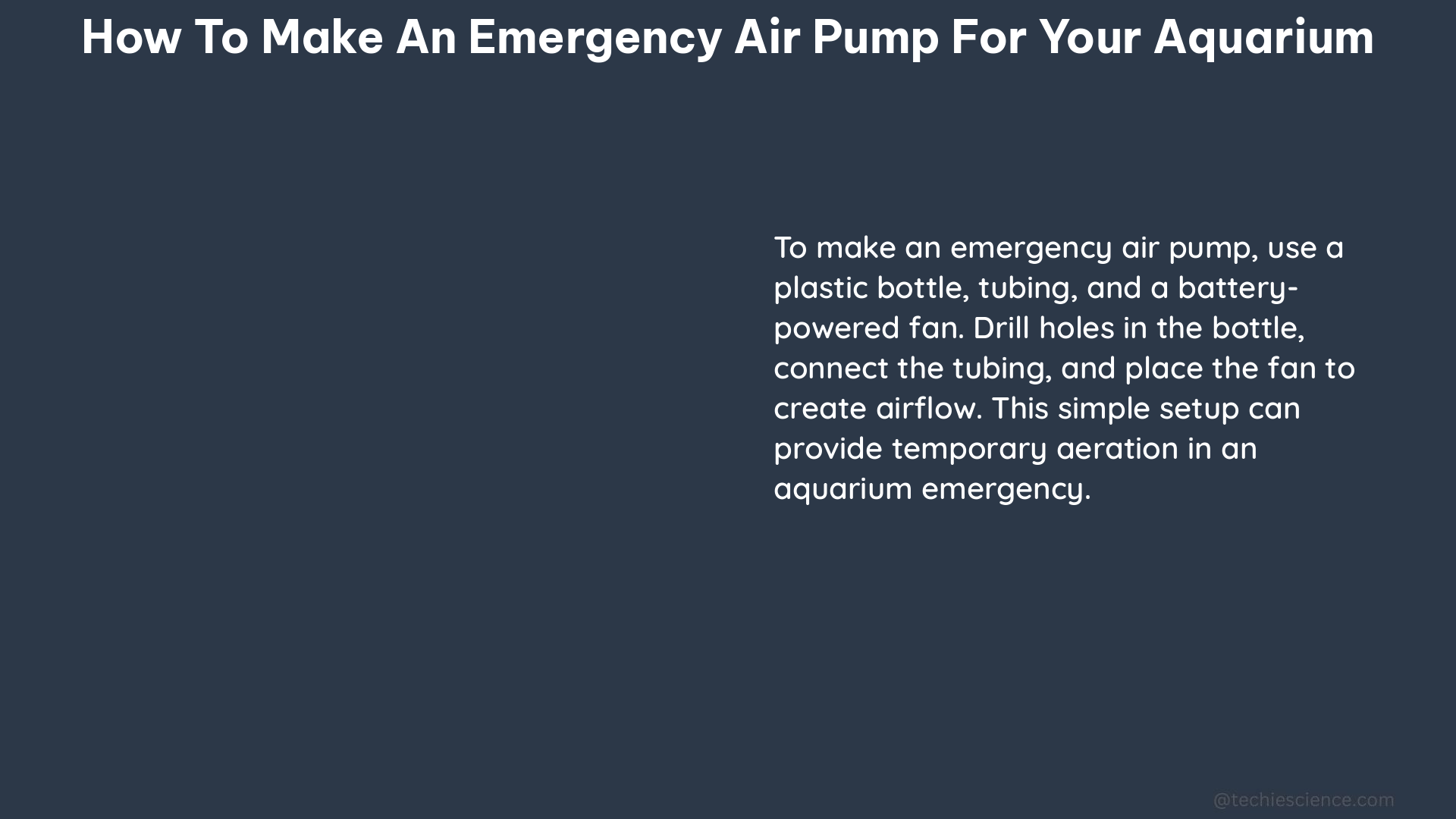Making an emergency air pump for your aquarium is a crucial skill for any aquarium enthusiast. In the event of a power outage or other emergency, an emergency air pump can provide a lifeline for your fish by ensuring a continuous supply of oxygen. This comprehensive guide will walk you through the step-by-step process of creating three different types of emergency air pumps, each with its own unique technical specifications and design.
Free Energy Aquarium Air Pump DIY
This method utilizes a plastic bottle, a DC motor, a battery, a switch, and a hose to create a simple yet effective emergency air pump. The technical specifications are as follows:
- Plastic Bottle: 2-liter soda bottle
- DC Motor: 12V, 3-5A
- Battery: 12V, 7Ah
- Switch: Single pole, double throw (SPDT)
- Hose: Clear vinyl tubing, 1/4 inch inner diameter
To construct this air pump, follow these steps:
- Cut the bottom off the plastic bottle.
- Attach the DC motor to the bottom of the bottle using adhesive or glue.
- Attach one end of the hose to the plastic bottle cap on the DC motor.
- Connect the battery to the DC motor using the switch.
- Place the air pump in the aquarium and submerge the hose in the water.
Make an Emergency Battery Air Pump for Aquarium: DIY Hack

This method utilizes a battery, a DC air pump, a battery clip, a hose, and a check valve to create a compact and portable emergency air pump. The technical specifications are as follows:
- Battery: 12V, 7Ah
- DC Air Pump: 12V, 4L/min
- Battery Clip: 12V
- Hose: Clear vinyl tubing, 1/4 inch inner diameter
- Check Valve: 1/4 inch
To construct this air pump, follow these steps:
- Connect the battery clip to the battery.
- Connect the DC air pump to the battery clip.
- Attach the hose to the DC air pump using the check valve.
- Place the air pump in the aquarium and submerge the hose in the water.
Group-3-DIY-Air-Pump (3)
This method utilizes a DC motor, a battery, a switch, a plastic bottle cap, a lollipop straw, and a hose to create a unique and customizable emergency air pump. The technical specifications are as follows:
- DC Motor: 12V, 3-5A
- Battery: 12V, 7Ah
- Switch: Single pole, double throw (SPDT)
- Plastic Bottle Cap: Standard 2-liter soda bottle cap
- Lollipop Straw: Standard 1/4 inch diameter
- Hose: Clear vinyl tubing, 1/4 inch inner diameter
To construct this air pump, follow these steps:
- Attach the DC motor to the plastic bottle cap using adhesive or glue.
- Place a lollipop straw on the plastic bottle cap on the DC motor.
- Attach one end of the hose to the lollipop straw.
- Connect the battery to the DC motor using the switch.
- Place the air pump in the aquarium and submerge the hose in the water.
Measuring the Flow Rate
Measuring the flow rate of the air bubbles produced by these emergency air pumps is crucial for ensuring they provide adequate aeration for your aquarium. One simple method is to place a measuring cup upside down over the output of the air pump, filled with water, and time how long it takes to fill the measuring cup with bubbles. The flow rate can then be calculated by dividing the volume of the measuring cup by the time taken.
For example, if it takes 30 seconds to fill a 1-liter measuring cup with bubbles, the flow rate would be 2 liters per minute (LPM). This method provides a rough estimate of the flow rate, but it is sufficient for emergency situations.
To obtain more accurate and engineered data, you can use a venturi with a differential pressure sensor, as suggested in the references. This method requires more advanced tools and knowledge of fluid mechanics, but it provides pressure data over time, which can be used to calculate the flow rate with higher accuracy.
In conclusion, making an emergency air pump for your aquarium can be a simple and cost-effective way to ensure the well-being of your fish during power outages or other emergencies. By following the detailed instructions and technical specifications provided in this guide, you can create a reliable and customizable emergency air pump that can provide the necessary aeration for your aquarium.
References:
- Free Energy Aquarium Air Pump DIY
- Make an Emergency Battery Air Pump for Aquarium: DIY Hack
- Group-3-DIY-Air-Pump (3)
- Measuring Flow Rate with Venturi and Differential Pressure Sensor
- Aquarium Air Pump Troubleshooting and Maintenance
